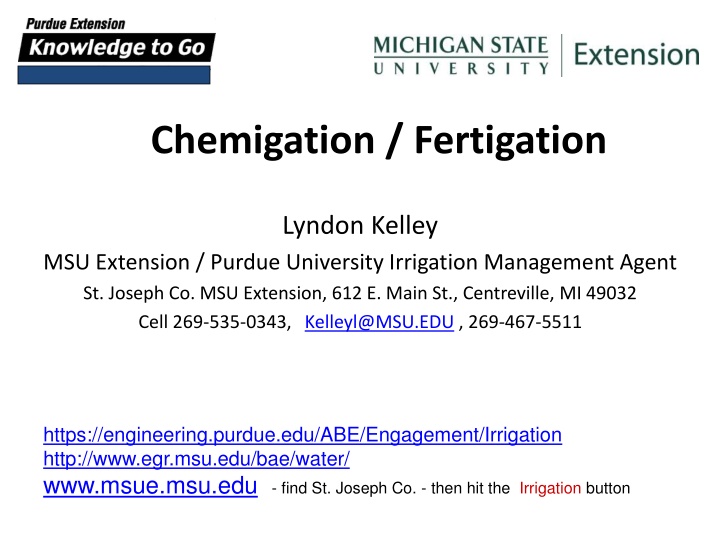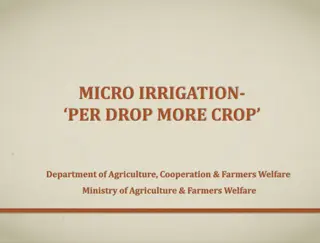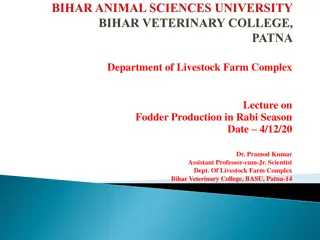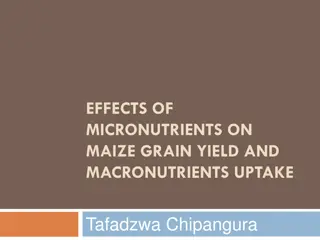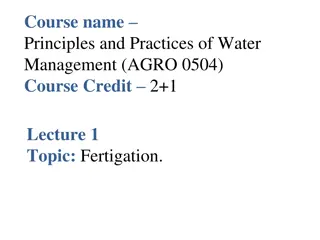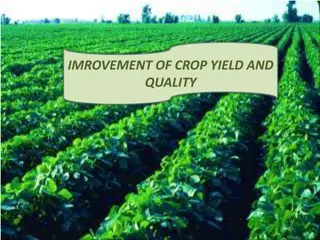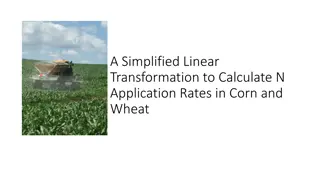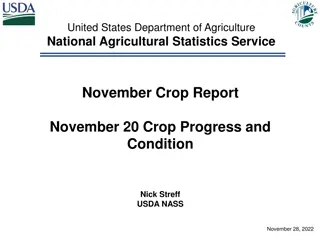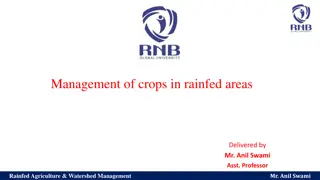Efficient Fertigation Practices for Improved Crop Yield
Enhance your crop yield with efficient fertigation practices outlined by Lyndon Kelley, an irrigation management agent at MSU Extension and Purdue University. Understand the key aspects of fertigation planning, including matching N uptake curves, optimizing N source availability, and utilizing irrigation to maximize pesticide and nutrient benefits. Learn about the importance of uniform water application and how to implement fertigation effectively for optimal results.
Download Presentation

Please find below an Image/Link to download the presentation.
The content on the website is provided AS IS for your information and personal use only. It may not be sold, licensed, or shared on other websites without obtaining consent from the author.If you encounter any issues during the download, it is possible that the publisher has removed the file from their server.
You are allowed to download the files provided on this website for personal or commercial use, subject to the condition that they are used lawfully. All files are the property of their respective owners.
The content on the website is provided AS IS for your information and personal use only. It may not be sold, licensed, or shared on other websites without obtaining consent from the author.
E N D
Presentation Transcript
Chemigation / Fertigation Lyndon Kelley MSU Extension / Purdue University Irrigation Management Agent St. Joseph Co. MSU Extension, 612 E. Main St., Centreville, MI 49032 Cell 269-535-0343, Kelleyl@MSU.EDU , 269-467-5511 https://engineering.purdue.edu/ABE/Engagement/Irrigation http://www.egr.msu.edu/bae/water/ www.msue.msu.edu - find St. Joseph Co. - then hit the Irrigation button
Aspects of Fertigation Planning 1. Try to match the N uptake curve for your crop 2. Beware of the N source availability. Liquid N - 28% is about available immediately and rest over the next week (warmer the soil the quicker) 3. The greater the portion applied later, the lower the chance of N loss to leaching or saturated soil volatilization. 4. The greater the portion applied later, the more chance you have to reflex price change for the crop or input in the plan. 5. Sandy irrigated soils will often provide a yield bump for each additional N split. Yield bump is minimal beyond 4 splits 6. Sidedress application are still important - soil aeration and increase water infiltration Improves incorporation of herbicides. Improves activation of herbicides. Improves activation/reactivation of insecticides. Reduces nitrogen volatilization. Maximizes yield to utilize the resources. Using irrigation to get the most from pesticides and nutrients Timely application of irrigation water:
-Fertigation Application of fertilizer via irrigation water. -Side Dress N The quantity of N taken up by the crop or subject to loss from a single N application (A) or split N applications (B) (Adapted from Doerge et al., 1991).
Use fertigation to apply the additional fertilizer need for the higher expected yield only to the irrigated part of the field Pivot without end gun 121 irrigated acres 39 dry acres Pivot cornering arm Pivot with end gun 150 irrigated acres 128 irrigated acres 10 dry acres 32 dry acres
Uniform Water application essential for uniform fertigation/chemigation Unless you know the uniformity of the system keep fertigation application to less than 25% of total plan.
Example N plan : 200 bu/acre irrigated commercial corn Expected yield goal 200 bu/acre resulting in 220 lb. N recommendation 35 lbs.. in starter at planting 135 lbs.. as sidedress 50 lbs.. fertigation, 2 week prior to tassel 50 lbs.. in starter at planting 70 lbs.. as sidedress 100 lbs.. fertigation, 2 week prior to tassel 50 lbs.. in starter at planting 70 lbs.. sidedress or fertigation, knee high 50 lbs.. fertigation, waste high 50 lbs.. fertigation, 2 week prior to tassel 50 lbs.. in starter at planting 75 lbs.. sidedress or fertigation, knee high 75 lbs.. fertigation, 2 week prior to tassel 20 lbs.. fertigation, at tassel
Chemigation backflow valve and injection check valve Positive displacement injection pump Chemigation / Fertigation Systems - Safety Interlock
Chemigation/Fertigation Calibration Monitor for calculation errors or system malfunctions. Shut downs Backflows Hose burst Mark the supply tank level at start Mark the supply tank level at , , and from finish Monitor and adjust if needed, calculate and record the actual applied amount for future decisions. Backflow situation . Pump, Pump, Pump as soon as possible.
